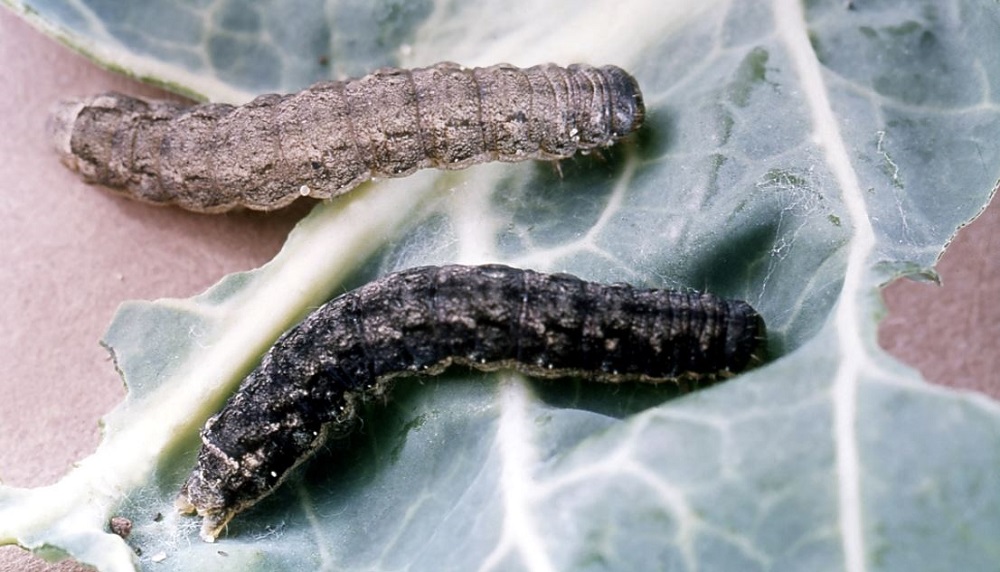- Home
- Knowledge library
- Identification and management of the cabbage moth in vegetable brassicas
Identification and management of the cabbage moth in vegetable brassicas
Cabbage moth larvae feeding can quickly skeletonise the outer leaves of large plants, sometimes killing young plants. Eggs may not be detected until damage has occurred, but pheromone traps that attract males can be used to monitor adult activity.
Risk factors in vegetable brassicas
- Vegetable brassicas are the most susceptible. Larvae also feed on a variety of plant species, including potato and other vegetables, without causing economic damage
Moth identification
Scientific name: Mamestra brassicae
Adults are greyish–brown, mottled with dark brown. The forewings have a span of 35–50 mm. There is a kidney–shaped marking with a white outline on each forewing and an irregular white transverse line near the wing margin.
Eggs are hemispherical (0.5–0.6 mm diameter) and white, darkening close to hatching.
Newly hatched larvae are green, ranging from green to brown – or even almost black as they mature.
Older larvae have a dusky dorsal stripe, speckled with white and a yellowish, light green or dusky brown stripe low down on the sides. The larvae are 40–50 mm long when fully grown.
Cabbage moth life cycle and crop damage
Nov–Apr: Cabbage moth generally overwinters as a pupa in the soil, although it may also overwinter as a larva.
May–Jun: Adult moths (first generation) emerge from pupae and lay eggs in batches of up to 50, which may be hard to detect.
Jun–Jul: Larvae feed on leaves and pupate in a cocoon in the soil.
Jul–Sep: Adult moths (second generation) emerge from pupae and lay eggs.
Aug–Oct: Larvae feed on leaves and pupate in a cocoon in the soil.
The second generation is the most damaging to brassica crops, with large larvae present quite late in the season.
Non-chemical and chemical control
Non-chemical control
Several polyphagous predators attack this pest. The eggs or larvae may also be parasitised by certain species of wasps or flies, which eventually kill the larvae. The larvae continue to feed for some time after they have been parasitised, so crop damage is not reduced immediately. Larvae may also be killed by viruses.
How to encourage natural enemies of field crop pests
Biological control with egg parasitoids (Trichogramma spp.) has been investigated overseas, but not in the UK. Although some biopesticides may be effective, some products based on Bacillus thuringiensis (Bt) are relatively ineffective.
Although sources of resistance in brassicas have been identified, no host resistance is available in commercial cultivars.
Monitoring
Use pheromone traps to catch male moths.
Thresholds
None established.
Insecticide resistance
None known.
 University of Warwick
University of Warwick

